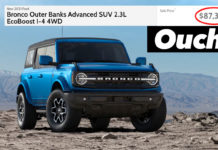 Got a few questions for ya’: While driving downhill, have you ever
Got a few questions for ya’: While driving downhill, have you ever
seen smoke flying from the inside of the rear wheels of a tractor
trailer?
Have you ever felt your brakes get mushy while going down a
fast, steep grade?
Ever smell an acidic, sweet smell that becomes acrid
as you continually push on your brakes? Do you ride your brakes? Are
you driving in the left lane slower than traffic in the right? Do you
tailgate (drive too closely) to vehicles in front of you? Looking for
that elusive cell signal at 8,000 feet?
Do you know what to do if you
blow a tire while zooming downhill? Living in the or near the mountains,
knowledge of mountain driving is a necessity.
Below are a few tips to
help you drive more safely in the Mountains.
 If your brakes go out:
If your brakes go out:
Brakes can go out. It’s just a
fact of life and even if your vehicle is brand-new, there is still a
possibility. Often, brake fluid is boiling, brake pads go to wrack and
ruin, drums and discs overheat even brake-lines can disconnect (or be
ripped out by debris).
Whatever the cause, it’s a cold,
terrifying feeling when you push your brake pedal all the way to the
floor and nothing happens.
Try to keep your cool. As you work
your way to the right shoulder, try pumping your brakes several times to
see if anything is left of your brakes. Sometimes, they fade greatly
and feel like they are out when they are still somewhat useable. Make
sure no one is behind you when you pump (in case they suddenly grab and
you stop).
If nothing happens, you need to start dropping gears.
Turn on your hazard blinkers (to let others know you’re in trouble).
Take your time and let the vehicle’s gearing do the work as you make
your way down to your lowest gear. If possible, pull on to the right
shoulder while you gear down. Once you get down to your last gear and
your vehicle is rolling as slow as you think it will go, pull (or push)
you parking brake lever/pedal. Usually, the parking or “E” brake is
cable operated and is separate in operation from your regular brakes.
Usually, this will stop many vehicles when they are moving at their
slowest in gear. Once stopped, shut off your engine immediately.
If your rear brakes are gone, the
parking brake may not work. Most steep, downhill highways have emergency
ramps that look like mini ski slopes. Even though they are made for
trucks, they will stop just about anything. These ramps are filled with
fairly deep, loose sand that sinks the tires quickly dissipating
momentum. You’ll notice a call-box right by the emergency ramp.
The
final option is the guide rail. Look, it’s a scary proposition, but if
there is no other option and you HAVE to stop,
this may be your only recourse. Get into your lowest gear and gently
rub the guardrail steadily increasing your turning effort. Don’t turn
against the guardrail too quickly. Once you’re at a near crawl, put your
car in park. You’ll most likely hear a loud clanking noise before the
transmission settles into park.
 If your tire blows:
If your tire blows:
Do NOT
slam on your brakes!
If you lost a front tire, the drag from
the disintegrating tire will pull your car and (possibly) make you loose
control. Rear tires are not as obvious as a risk as you still have your
steering tires making contact with the road. Either way, try to
maintain control without slamming on your brakes. Ease your way over to
the shoulder as safely as possible. If you must bleed off some speed,
drop down one gear.
When you do, expect the car to heave back. Stay off
the brake until you are near the shoulder. In icy conditions, you will
have to react with as little sudden turning and braking inputs as
possible. Remember: your contact patch for each tire is only a few
square inches. Loosing one tire removes much of your traction.
Do
not ride the rim of your tire any further than the shoulder unless
you’re in an unsafe location, (i.e., too close to moving traffic). Once
you’ve stopped, open your hood as this will allow motorists at greater
distances to see that your vehicle is in trouble and allow them more
time to avoid you. Set out reflectors, flares, brightly colored jacket –
anything at 15 foot increments behind your vehicle to warn others of
your status.
Your car is now a target. If you can get you and/or
your family out of your car, away from traffic – all the better. If
there is nowhere safe to move – make sure they continue to wear their
seatbelts.

Automotive media, racing, vehicle evaluation, wrecking yards, and car
sales are just a part of Nathan Adlen’s vehicular past. He writes out
of high octane passion! To read more reviews by Nathan Adlen or just to
enjoy more of excellent writing please visit him on at his examiner.com
page HERE.
Follow on twitter @TFLcar or
watch latest car review videos on YouTube.

























